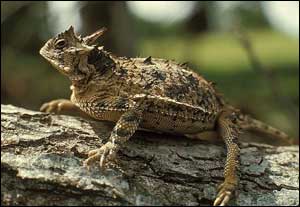Texas Horned Lizard Watch 10-Year Summary Report
Background
Texas Horned Lizards, one of three horned lizard species in Texas, were historically distributed across much of the state, with the exception of the far eastern edge of the state (Price 1990). They have long been popular icons of Texas culture, and many older Texans can recount personal experiences with horned lizards (Manaster 2002, Welch 1993). However, recent studies (Donaldson et al. 1994, Henke 2003), as well as anecdotal accounts, show that THL have declined in much of their range. Concern about declining numbers and over-collection led TPWD to list the species as threatened in 1977 (Handbook of Texas Online 2007). Many uncertainties have remained regarding current distribution, causes of decline, and current trends of THL. Because of Texans’ fondness for and familiarity with THL, we developed Texas Horned Lizard Watch with the hope that citizen monitors might be able to answer some of those questions about the species.

Horned Lizard on a Log
The monitoring project is self-directed, with volunteers able to access information on horned lizards, descriptions of monitoring protocols, and data sheets in a free monitoring packet, both in printed form (TPWD 2001) and online (www.tpwd.state.tx.us/hornedlizards/). Participants can choose to participate in Texas Horned Lizard Watch at three different levels. The most intensive level consists of conducting transects that collect quantitative data on horned lizard and ant density. Most participants choose a less rigorous approach, Adopt-a-Habitat, in which they adopt sites, such as a ranch, backyard or local park, and provide more qualitative information about the presence or absence of horned lizards and habitat variables. Participants can also participate as Horned Lizard Spotters and report incidental sightings of horned lizards wherever they occur. Data for this summary report was also gleaned from emails and telephone calls that came into TPWD (data was confirmed through follow-up contact) and through several directed survey efforts.
Top of Page^
 (
(